Job loss with technology
For a long time now, the sky has been falling regarding jobs for everyone. In the industrial revolution, we thought machines were taking our jobs. Instead, they moved people off the land into factories. This gave work to men, women (and children) – and even though today's safety conditions and benefits weren’t in place yet, it was another door opened for people to gain employment. Over time, we saw machinery move offshore or become streamlined, no longer needing as many (if any) humans involved to produce products at a higher rate.
About 100 years later, we had the mass rollout of computers, using their technology to help improve workplace efficiency and creating a whole new field of jobs – IT support, programmers and engineers. Less than 50 years later, we’ve had the mass rollout of AI technology, with the same concerns being heralded again and again about who’s going to lose work and who’s going to gain – and, are we prepared to keep up with this rapid, evolving change? In 25 years, will we have another groundbreaking technology that will spark this same age-old conversation again?
Where we’ve seen things change
The reason we at HutSix began this navel gazing journey is because we threw out our deskphones this week. A system that cost us $20,000 to install five years ago became obsolete in March 2020 when we all had to work from home. Suddenly, we couldn’t all be based in the office, but our clients still needed us over the phone. So, what was the solution? Forwarding all calls to our CEO, having him take a message, send a text to the staff member who could help, and hope they would call back as soon as possible – since we couldn’t surveil our employees like we used to.
This was a major inconvenience for everyone involved. Clients were getting frustrated, our CEO was missing calls because he was already on the phone, and our team were having to call clients back on their own phones – so we had clients calling our team members mobiles directly at all hours. Luckily, in the NT, we weren’t in a forced lockdown for that long at all, only about six weeks. But when we all came back to work, a lot of us didn’t want to come back to the office full-time, most of our team adopted flexi arrangements between home and the office. It was clear that there was no going back post-lockdown to the way things had been.
So, we went looking for a new solution. We ended up with a company called Dialpad (which we strongly recommend) and found the whole process really easy. Suddenly, our team members were able to operate from anywhere in Australia to work on projects of varying scales. Phone calls to and from clients could be made through a computer or a smartphone. Our employees were able to form a kind of work life balance as they are able to control the hours of the day their work line is on. The stress around a simple phone call disappeared, and with features like group calling, auto transcribing and integrations with Gmail and Google Drive, it made life really easy.
How did we get here?
You might think that this isn’t a major deal, it’s just a phone, but it goes much further. It speaks to the true integration of work and life, of the intertwining of these two parallels into one, and of changes in traditional business practice. Pre-COVID-19, it was all about the office. Of having the big, fancy, open plan office with high-gloss features, fancy desks, table tennis tables and beanbags. It was a space to show off to your client about how successful you are, to create a physical environment that staff actually want to work in.
All meetings and big decisions were made in person, to look someone in the eye to see if they were serious or not. As email slowly moved into our worlds, it became the norm for approvals and small conversations, but over the phone and in person were preferred for that bigger picture discussions and to build trust.
And now, that is no longer an option. In 2020, it wasn’t possible to jump on a plane from Sydney to Melbourne to attend just one meeting, that meeting is now on Zoom or Teams. Despite the pandemic, life must go on. We were getting married, attending funerals, meeting as a board, forming companies and having birthday parties online. We had to keep going with our lives, despite the physical limitations we were living amongst. Suddenly, it became normal to make big decisions in the virtual world.
When HutSix moved back to the office, we had a long delay from seeing clients again. Even now, almost a year on, we don’t see as many clients in person as we used to, but our work level has increased. Suddenly, it becomes easier to deal with people who aren’t in your same city – a taboo has been dropped.
What will the next evolution be?
Now that the taboo has eased, where will we go next? How will we continue to have positive communication with each other and our clients? Well, we think it will go in the way of instant messaging. Texting has become a normal way to communicate with various providers, using texts to confirm beauty and mechanic appointments, to our favourite thing, two-factor authentication.
We’ll start to see the world change in the face of email, which is a form of communication that is quite private, and is often used for the sender’s benefit. In fact at HutSix, we don’t run any internal email, and all of our client requests go through a ticketing system that outlines priority, with a workload shared between all team members.
We keep all internal information in a central location that can be accessed by everyone, in a shared blog-like space called Confluence which is in the suite of Atlassian products we have integrated into our workload. That way, it doesn’t matter how messy someone's inbox is, or if they were with the company at the time of the inception of the project, the information is in a centralised location. This also helps flatten the curve of the mental IP as we don’t have a whole project hinging on one person, which can lead to bottlenecks.
What’s the future looking like?
We’re hoping for a future that’s more personal and more technically driven. We’re hoping we can get to a stage where we can text clients to get their approvals on projects, where clients can video call us in to see technical issues live. We will likely start to leverage customer service more, and with more AI assisted interactions, we might be a bit more enthusiastic about chatting with a human to get something sorted – on your own terms, and with your preferred technology.
As we see a natural shift into a younger workforce, it won’t seem out-of-step to have a continuous flow of communication across a multitude of platforms; we’re moving to working ‘wherever, whenever.’ Having mutual respect between everyone involved on a project, and working to our clients unique terms and experiences, is becoming the new normal.


